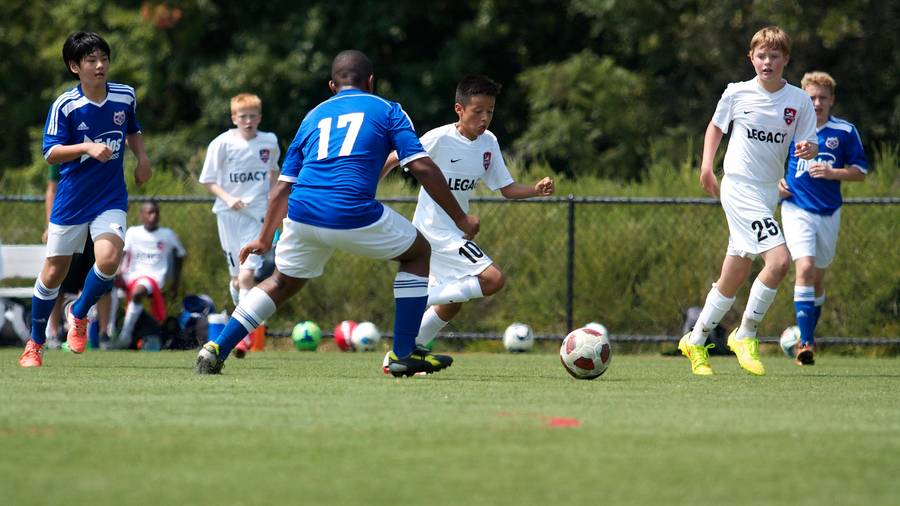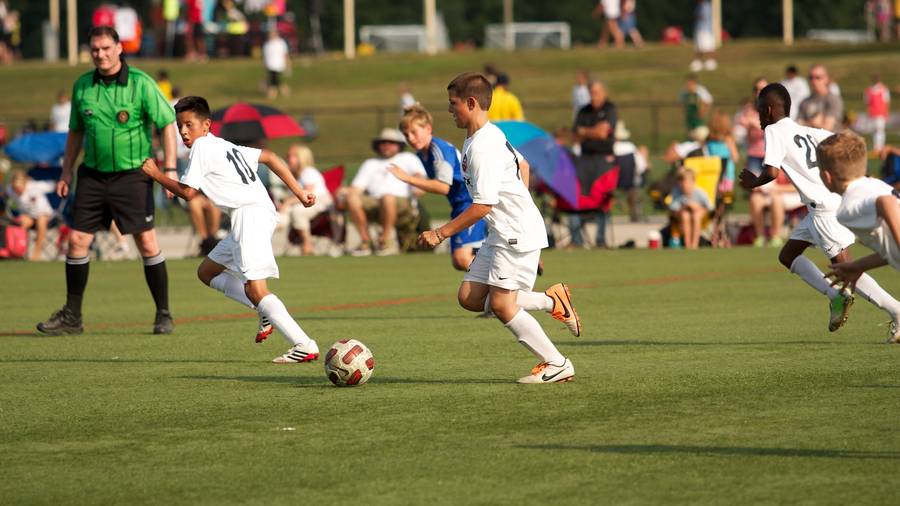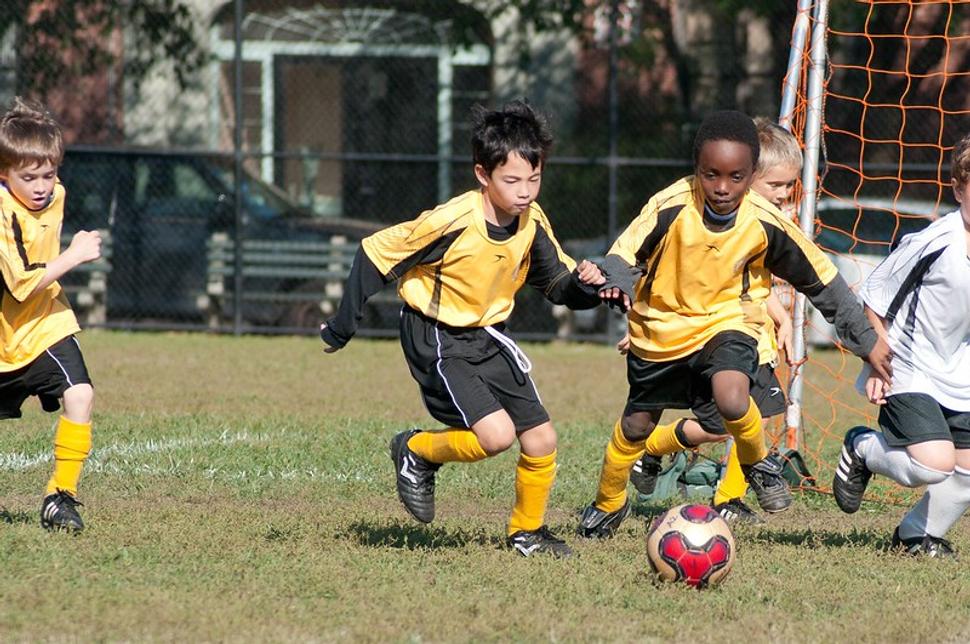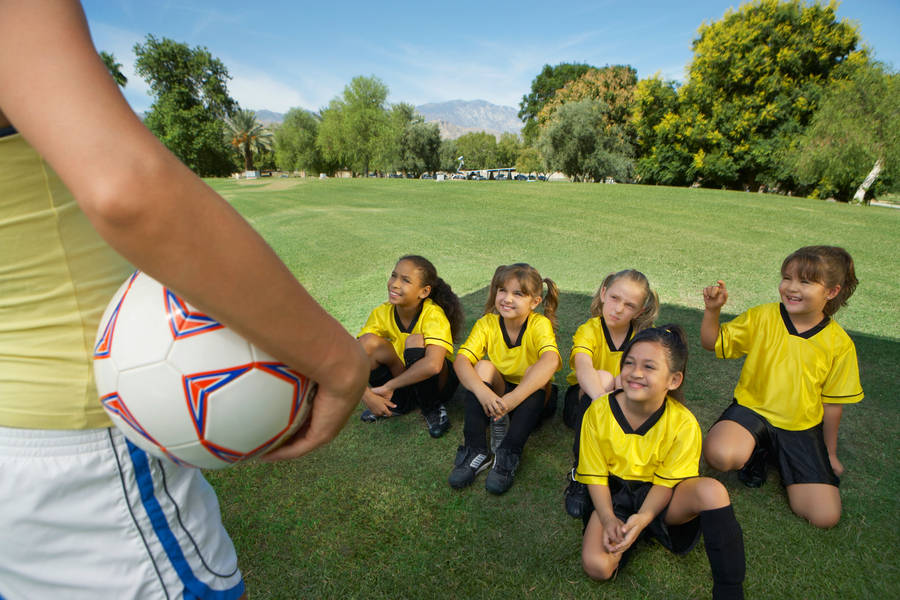
Now that winter has properly announced its arrival with temperatures hovering either just above or just below freezing, it’s essential as a Junior Football Coach to make the necessary adjustments.
Whether it is a game or an outdoor training session, the moment your players get cold on the inside is the moment they stop enjoying it and you lose them. Keeping them on the move at all times is crucial and helps to keep them engaged in the session.
We can probably all remember back to our own childhood experiences of playing and at least one occasion when we allowed ourselves to get so cold at football that we couldn’t move and just what a miserable experience it was.
The last thing we want is to be inflicting a similar experience on our players and it is the coach’s responsibility to avoid it.
The notion of standing and talking to the group for a long part of the session needs to be shelved in favour of something that will keep them both warm and engaged.
Here’s a 45 minute session to try in your next training to keep your players constantly on the move.
Warm-Up (8 mins)
Create a square with four cones and give your players a ball each. Using all parts of both feet they need to dribble the ball around the square in all directions. They need to lift their heads to ensure they can see where they are going.
On your shout they can change direction or you can introduce 15 seconds of right foot / left foot only. This is a great way of getting them on the move from the start and for them to accumulate multiple touches of the ball which leads to better results.
You can raise or lower the tempo as you see fit, and finish the last minute with ‘killer’ where the players have to kick the others’ balls out of the square to get them out.
Stretching (5 mins)
Range of standard stretches to avoid injury.
Be sure to stretch all the key muscles and ensure your players are completely ready to start the main part of the session before moving on. As we know, the cold weather is a key time for players to suffer from pulled muscles and other injuries, so it is important that they are completely ready.
Drills
Football at the very top level is often based upon the principles of passing and moving. Any side that can deliver these skills will very quickly become competitive. The slicker the passing and the quicker the movement, the better the team will become. The following drills help to improve your player’s ability to cope with the ball and move it quickly. Just as important it keeps them engaged and on the move which is perfect for this time of year.
1) Possession Square (8 mins)
This drill can be challenging, rewarding and fun. It is a really simple drill to execute and builds on the work done in the warm up.
You can adjust the size of the square from the warm up or keep it the same but bear in mind the smaller the square the harder the drill.
Separate the players into two sides, attacking and defending. With a single ball, it is the attackers’ role to keep the ball moving inside the square. The team of defenders must try and dispossess the attacker’s and kick the ball outside of the boundary of the square. You can adjust the balance of players on both teams to make this drill as competitive as you like. Often it works best if you have double the number of attackers as defenders e.g. 8 vs 4. The confinement in the square means players must work hard to create spaces in which to play and develop opportunities.
You can further extend the complexity of this drill by introducing a second ball.
2) Inside / Outside Passing (8 mins)
Split your players into two teams and set out a large circle with cones.
Half of the players need to be inside the circle and half outside. The players inside the circle must pass to an outside player, receive the ball directly back and then move around the circle and pass to another vacant outside player. The players inside the circle must avoid each other whilst making sure they deliver highly accurate passes to the outer players.
As a coach, you should encourage the players to deliver passes that are well weighted, are accurate (no long treks to the other side of the pitch to retrieve errant balls!) and communicate to let their teammate know the ball is coming to them.
The first touch of players into space with both feet is important and their ability to play with their head up to avoid traffic and find the next pass too.
Swap outer and inner players every 2 minutes to keep everybody busy.
Again, you can adjust the size of the playing area to get what you need from the drill. A tighter square leads to sharper, more intense work. A larger area tests and develops mid-range passing ability which is essential to progressive passing teams.
3) Passing through the midfield pivot (8 mins)
This final passing drill works on different passes, receiving the ball and the importance of retaining possession.
You will need to set up a grid approximately 20 metres X 20 metres although again, the size of the grid can vary depending on what you would like them to take out of the session.
You will need a midfield ‘pivot’ player in the centre of your grid. The remaining players should be split into even lines on the four corners of the grid.
A player on one of the corners must begin by passing the ball into the midfield pivot player and start a run down the side line. Once they reach the other corner they must join the back of that queue.
Upon receiving the ball, the central pivot player must play a first-time pass to the player at the next corner.
Continue the drill until everybody has returned to their starting position. Encourage your players to find a good tempo and once again good communication leads to better outcomes.
Game (8 mins)
Embed their improvement and appreciation of passing and moving in a short game to finish. Encourage them to deliver on the skills just practised, and of course to keep moving!
They should have an improved awareness of their own movement and the movement of others around them. You should notice and encourage quicker passing and the player in possession should find themselves with more passing options, and nobody should be cold!


















